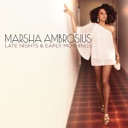Neo Soul
Erykah Badu
Patrik Hamberg, CC BY-SA 2.0, via Wikimedia CommonsKey Attributes of Neo Soul
Select to filter timelineThemes
- Social Consciousness
- Love/Relationships
- Economics/Poverty
- Cultural Influences
- Racism/Discrimination
Musical Features
- Vocal Sounds
- Groove
- Tempo
- Sampling
Instruments
- Drums
- Electric Piano/Synthesizer
- Organ
- Other Electronic Instruments
- Other Percussion
- Piano
- Saxophone
- Trombone
- Trumpet
“There is a great expansion in neo soul [in the 2000s], which can have all kinds of influences, jazz, hip-hop, even electronic music. Of course, it was huge in the ’90s with D’Angelo, Erykah Badu, Lauryn Hill, and Maxwell, but you can see even a bigger expansion of it in mainstream today with John Legend.”Angie Stone
When singer-songwriter Erykah Badu’s debut album, Baduizm, hit the airways in 1997, she introduced a new musical style that captivated audiences. Motown Records’s Kedar Massenburg marketed it as neo soul, describing its uniquely blended elements of soul, R&B, jazz and funk. A few years earlier, the sound of Tony! Toni! Toné!’s Sons of Soul (1993) and D’Angelo’s Brown Sugar (1995), reverberated the 1970 soul sensibility that some critics identify as the first recordings of neo soul. The prototype for neo soul as a distinctive genre, however, appears to be Me’Shell NdegéOcello’s Plantation Lullabies (1993), in which the spoken word tradition is delivered over soul, funk, hip-hop and jazz-derived tracks in a variety of tempos.
Context and History
Although soul music had begun fading in popularity with the rise of funk, disco and hip-hop in the 1970s, the soul aesthetic remained a viable resource for these and other artists in subsequent decades. In the 1990s, a new generation of singer-songwriters emerged on the scene creatively combining the ’70s soul aesthetic with elements from other traditions to create a contemporary soul sound. Although continuing and expanding on rather than reviving a past tradition, several artists viewed the neo soul label as restrictive, especially given the stylistic range of their creative endeavors. By the 2000s artists began recording their opposition, as did Jaguar Wright, on an LP titled Divorcing Neo 2 Marry Soul (2005). Marsha Ambrosus took the opposition a step further in her mixtape Neo Soul is Dead (2007) featuring DJ Drama. In addition to the mostly spoken and rapped lyrics declaring the death of neo soul, she buries the genre in the juxtaposing of hip-hop and P-funk tracks.
Neo soul artists entered the 1990s music scene when hardcore hip-hop and R&B were the two most popular and crossover forms of contemporary Black expression. Many of neo soul’s innovators were born in the 1970s to parents who grew up in the era of Black Power and soul music. Exposure to these Black Nationalist leanings and a broad range of musical styles inspired the worldviews and creativity of these young artists. CD and song titles such as Black Diamond (Angie Stone), “Ghetto Girl” (Eric Benét), and “Dred Loc” (Me’Shell NdegéOcello) reflect the ideology of ’60s and ’70s Black social and cultural consciousness. Ethnic and cultural references abound in the song lyrics. In “Sumthin’ Sumthin” for example, Maxwell described his love interest as a “honeydosugachocolate dumpling,” or his preference for a lady with brown legs in “Suitelady (The Proposal Jam).” Jill Scott describes her man as being of a deep brown complexion in “Love Rain” and makes reference to soul food (Black-eyed peas, collard greens, and sweet potatoes) in “It’s Love.”
The vocal aesthetic of soul singers such as Smokey Robinson, Curtis Mayfield, and Al Green infuses the smooth, mellow, and sultry vocals of D’Angelo, whose Brown Sugar (1995) juxtaposes the spoken word over a soul-jazz instrumental track. In contrast to D’Angelo’s speech-song delivery style, Maxwell’s vocal approach is similar to that of Smokey Robinson, illustrated by Maxwell’s Urban Hang Suite (1996) which layers melodies on top of a funk-oriented groove. Groove Theory, on their self-titled CD (1995), similarly preserves the sensibility of 1970s soul reminiscent of the Emotions. Eric Benét (A Day in the Life, 1999) on the other hand, presents an eclectic mix of songs that combines the soul-oriented vocals of Maxwell and the jazz–spoken word approach of Erykah Badu (Baduizm, 1997).
Some neo soul artists, like D’Angelo, tapped directly into the gospel tradition (“Higher”) or covered original soul recordings (“Cruisin’,” originally recorded by Smokey Robinson). Other artists sampled significant excerpts of 1970s soul recordings such as Angie Stone’s “No More Rain [In This Cloud]” and “Neither One of Us,” recorded by Gladys Knight and the Pips. Erykah Badu’s Baduizm (1997) and Mama’s Gun (1997) crystallized a distinctive neo soul style that exploits a range of Black aesthetic qualities. Her hybrid of spoken word and jazz includes improvisatory devices unique to jazz, including scat singing.
“My truth is relevant, and my songs are relevant, but I have to recalibrate myself and speed up my vibrations so that I can communicate with the voice of this generation.”Erykah Badu
In the new millennium, artists continue to identify with and celebrate the 1960s/1970s soul legacy. Retaining the soulful vibe (“Couldn’t Hear Me,” 2003) in the competitive music industry, Eric Roberson refers to himself as a “soul survivor.” Newcomer Leela James describes her singing as “back porch soul,” which is evident in her covers of Sam Cooke’s “A Change Is Gonna Come” (2005), Al Green’s “Simply Beautiful” (2009) and James Brown’s “It’s a Man’s Man’s Man’s World” (2009). Although John Legend keeps alive the acoustic sound in “All of Me” (2013) and other songs, by the second decade of the 2000s, the 1990s contemporary soul aesthetic had begun to transform, moving in a different direction as artists crossed many new genres and experimented with advanced technologies.
Musical Features/Performance Style
The core features of neo soul combine the spoken word with aspects of jazz and soul. The signature singing style is characterized by a cross between speech and song. Its subdued delivery favors slow and moderate tempos, and the rhythmic flow “lags behind the beat,” an approach unique to Billie Holiday and emulated by Dinah Washington and many jazz singers. This speech-derived aesthetic juxtaposes percussive and melodic qualities. It gives preference to a narrow pitch range that uses one note per syllable (syllabic text setting), unlike soul which favors melismatic melodies with several notes per syllable. Recordings such as “Higher” (D’Angelo), “Booty” (Erykah Badu), and “It’s Love” (Jill Scott) retain the organic flavor of soul through the use of live musicians (rather than, or in conjunction with, synthesizers, computers, and samplers) playing instruments of the soul era: drums, percussion, acoustic piano and guitar, Fender Rhodes and Wurlitzer pianos, Hammond B-3 organ, trumpet, trombone, and saxophone.
In the new millennium, the neo soul aesthetic morphed into new and different sounds with the incorporation and even the domination of synthesized instruments. Marsha Ambrosius’s “Late Nights & Early Mornings” (2011), for example, blends synthesized strings, an acoustic piano, and electronic drums with the sound effects produced by the Auto-Tune, a digital device used to manipulate vocal and instrumental timbres. Erykah Badu fully exploits the Auto-Tune technology in P-funk-influenced “Love” (2010). Furthermore, artists began producing entire projects on laptops using music software as did Erykah Badu on New Amerykah (2008). Despite these changes, the vocal stylings and sparse and sometimes live instrumentation of 1990s neo soul pioneers lingers in the creations of several R&B artists of the new millennium, such as John Legend.
Lyrics
The most common theme in neo soul is personal relationships. Men acknowledge their vulnerabilities and fears in pursuit of rewarding and committed relationships (D’Angelo’s “Lady” and “Alright” and Maxwell’s “Lonely’s the Only Company”) and women address relationships with empowered and liberated voices that carry over into songs of social and political commentary. Me’Shell NedgéOcello’s Plantation Lullabies references the 1960s struggle for racial equality in “I’m Diggin’ You (Like an Old Soul Record)” and the negative effects of a capitalistic system on urban Black America in “Shoot’n Up and Gett’n High.” Erykah Badu details how drugs destroy lives and families in “The Cell” and the impact of systemic racism in “Twinkle.”
Bibliography
- Maultsby, Portia K. “Soul” in Mellonee V. Burnim and Portia K. Maultsby, eds. African American Music: An Introduction. 2nd ed. New York: Routledge Press, 2015, p. 277-298.
















